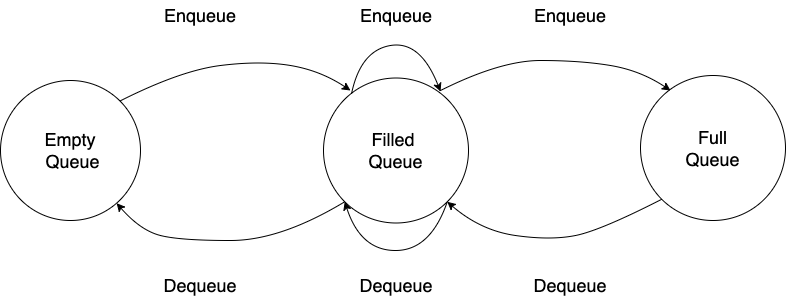- State. The information that a system remembers defines its state. For example, a queue system can be in a number of different “states”: an empty state, a queued state, or a full state.
- Transition. A transition is used to describe the change of a system from one state to another. A single system state can have multiple transitions; majority of systems today will have multiple transitions branching from one system state. This makes behaviors non-deterministic, since we cannot predict what the next state of the system will be.
- Behavior. The behavior of a system describes what the system will do when exposed to a condition, which can vary from timed system events to user input.
State transition systems can be thought of as directed graphs. Each node of the graph represents the set of states, and each edge of the graph represents the set of transition. We can determine how a system reaches a specific state by simply traversing the graph.

State transition systems can help us understand how parallel processing, multithreading, or distributed computing can affect the overall state of our system. Do we need to wait for another process to finish its work before continuing? At which junction of our system will we be bottlenecked?
In addition, state transition systems can help us identify deadlocks. A deadlock occurs when a process is waiting indefinitely for another to release a shared resource or complete its work. A state transition system can help you easily identify deadlocks since they occur if there is a condition that prevents a transition out of particular state.